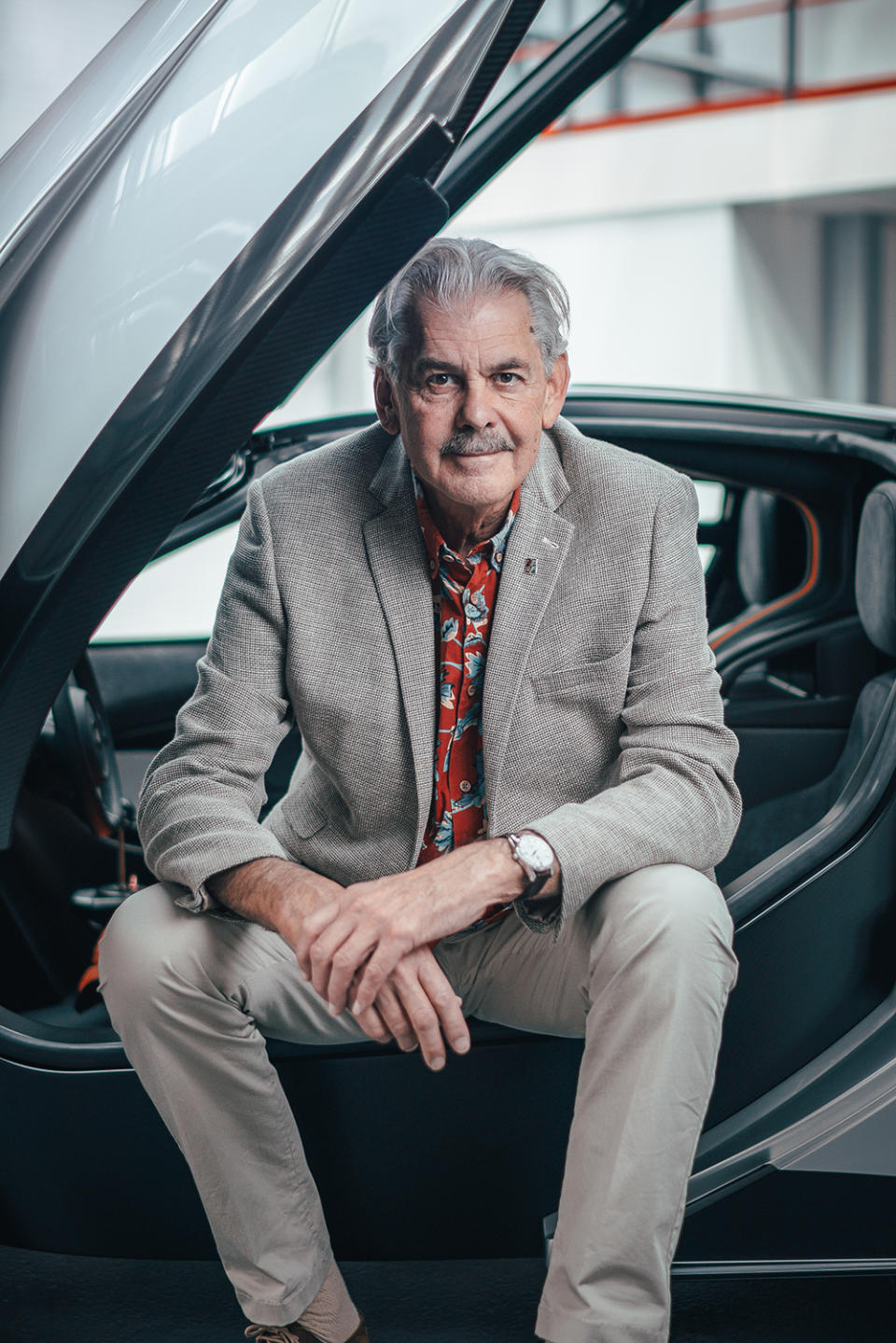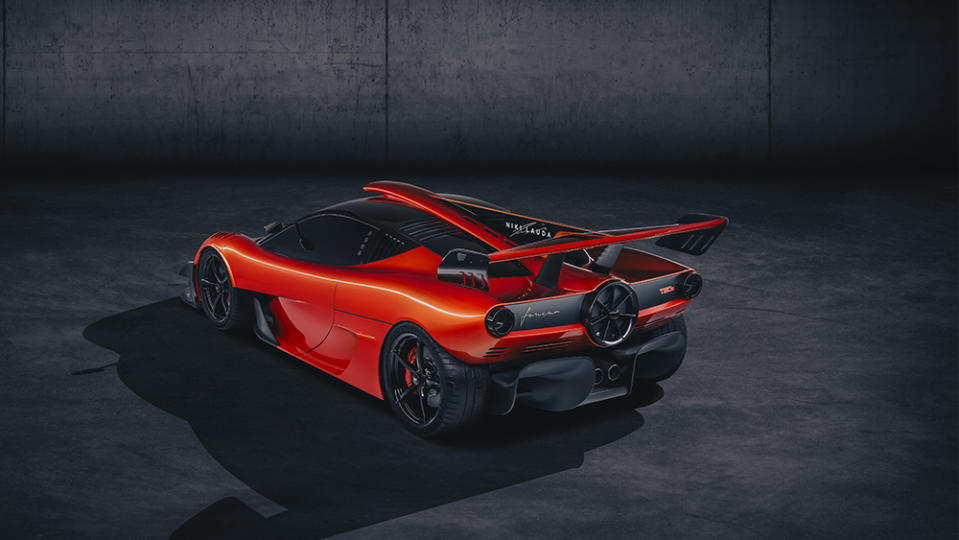Gordon Murray on His Favorite Race Cars, Lessons From F1, and the Value of Getting Your Hands Dirty

For over five decades, automotive designer and engineer Gordon Murray has been one of the most influential forces advancing both motorsport and road cars. In charge of a Formula 1 team by the age of 27, Murray spent 20 years in the world’s premier race series and has five World Constructors’ Championship titles to his credit. And while the seminal 1992 McLaren F1 road car is widely regarded as his capstone, the 77-year-old creative is far from done: His latest, the Gordon Murray Automotive T.50s Niki Lauda, recently made its U.S. debut at Monterey Car Week. Our conversation with the designer has been edited for length and clarity.
When did you realize that cars were going to be your passion?
More from Robb Report
Of Course John Mayer Is Already Wearing the New Rolex Daytona 'Le Mans'
This Insane Le Mans-Inspired Prototype Is Street-Legal, and It Can Be Yours for $600,000
From Prince Harry to Elon Musk, Celebrities Show Out at the U.S. Grand Prix in Texas
I was 5 or 6 years old. My dad was a motor mechanic, and just after the war, people started building specials to go racing again. I would sit on the bench watching him assemble these. There wasn’t a month without us going to see some form of motorsport. I can remember never wanting to do anything else but be a racing driver.
What was your greatest lesson from Formula 1?
With Brabham and Bernie Ecclestone, we had a tiny budget compared to the big guys like McLaren, Ferrari, and even Williams. That period taught me a lot about how to make a race-winning vehicle to beat the giants on a very low budget. You learn very quickly what makes a car go fast and doesn’t cost a lot of money.

Of all your race cars, which are you most proud of?
The Brabham BT44 is probably one of my favorites. Of course, it was my first Grand Prix winner, but it had a lot of innovation in it. It was the first Grand Prix car to have rising-rate pull-rod suspension, which now every racing car on the planet has. It was the first to lower the center of gravity with a triangular shape, the first to attach the rear suspension directly to the back of the engine, and the first to move a lot of fuel behind the driver and not down the sides, so there was less weight distribution changed during the race. It has a very special place in my heart.
Many collectors point to the McLaren F1 as being the next Ferrari 250 GTO in terms of holy grail status. What are your thoughts?
Like the BT44, it has so many firsts, and it had the best V-12 built up to that point. Then it went on to win Le Mans in its first attempt, and that you can never take away from a motorcar. When you’re designing a car, you just do the best you can. You don’t think about it becoming iconic. Of course, it’s always a lovely surprise when it does.
Describe your thought process behind the new T.50s Niki Lauda.
When I did the McLaren F1, I said to the shareholders and directors, “Please don’t talk about racing, because I’m trying to do the ultimate road car.” But then we had customers who basically forced us to go racing, and it was a compromise. This time, I decided right from day one that [the T.50] would be a clean-sheet road car and I would have a different team of people for a clean-sheet track car [the T.50s]. It’s a different starting point. It looks to be in the same family, but every single body panel is different, the monocoque is different, as is the transmission, engine tuning, driveline, and suspension. It’s basically another car, which is what I should have done with the F1.
Is there still life in the internal-combustion engine? Are there any ways left to improve it?
We just proved you can jump from 9,000 revs to 12,000 revs and still pass emissions. And there’s a long way to go still on fuels. You can run internal combustion on hydrogen, and synthetic fuels are coming along. The advancement on electrical vehicles is going to stall a bit until we get new battery technology—we need more efficient batteries, as the energy density is really poor on the current technology. I think the internal-combustion engine is going to be around for much longer than people are predicting.

will be limited to 25 examples, each in the neighborhood of $4 million.
Could you get excited about developing an electric car?
Because I grew up in the ’60s, with all those beautiful and lovely sounding motorcars, I tend to be more excited about those and less excited about electric cars. Ultimately, you will get a generation that has never driven an internal-combustion-engined car, the same way that, right now, at least in Europe, there are so many people who have never driven a rear-wheel-drive car. Personally, I still love the internal-combustion engine, but I realize we have to move on. Even at Gordon Murray Automotive, when we do have to hybridize and run electric cars, we will, but we promise everybody that they will still be the lightest, most exciting, and best engineered.
What advice would you give a young person looking to become the next you?
We’ve become more and more pigeonholed and specialized; it’s just the way our industry has gone. Even in racing, you get somebody in a Formula 1 team who has done front suspension for 20 years and has never seen the whole car. The advice I give all the youngsters is to get your hands dirty. If you’re going to be a designer, you have to have practical knowledge. Go and help somebody build a racing car, or restore a car. Try to see the bigger picture and don’t get too compartmentalized. I’ve been in this a long time, and the industry has been very, very good to me. My shareholding, almost in entirety, is going into building a technical college. That’s going to be my legacy.
Best of Robb Report
Sign up for Robb Report's Newsletter. For the latest news, follow us on Facebook, Twitter, and Instagram.


